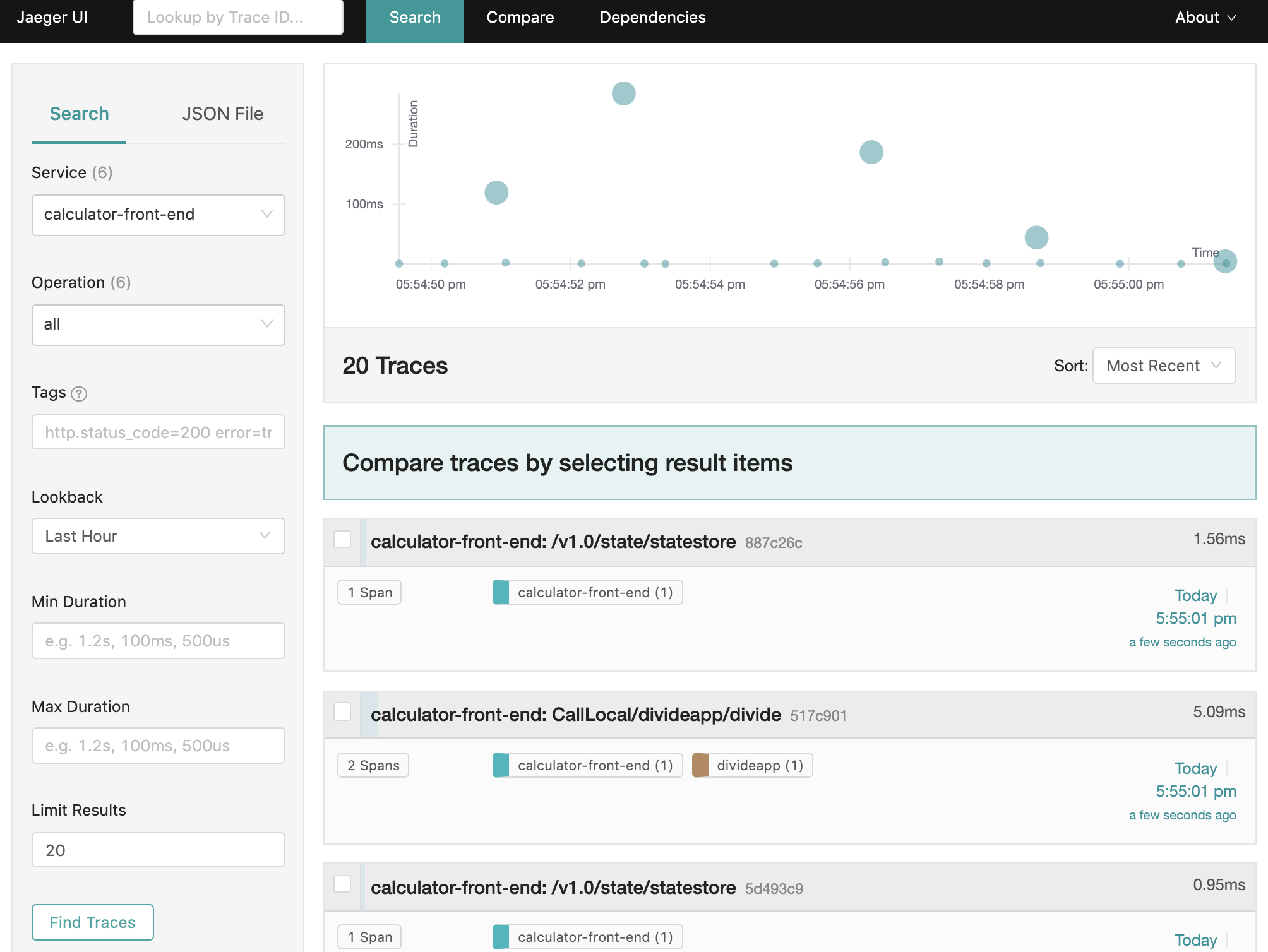How-To: Set up Jaeger for distributed tracing
Dapr currently supports the Zipkin protocol. Since Jaeger is compatible with Zipkin, the Zipkin protocol can be used to talk to Jaeger.
Configure self hosted mode
Setup
The simplest way to start Jaeger is to use the pre-built all-in-one Jaeger image published to DockerHub:
docker run -d --name jaeger \
-e COLLECTOR_ZIPKIN_HOST_PORT=:9412 \
-p 16686:16686 \
-p 9412:9412 \
jaegertracing/all-in-one:1.22
Next, create the following YAML files locally:
- config.yaml: Note that because we are using the Zipkin protocol
to talk to Jaeger, we specify the
zipkinsection of tracing configuration set theendpointAddressto address of the Jaeger instance.
apiVersion: dapr.io/v1alpha1
kind: Configuration
metadata:
name: tracing
namespace: default
spec:
tracing:
samplingRate: "1"
zipkin:
endpointAddress: "http://localhost:9412/api/v2/spans"
To launch the application referring to the new YAML file, you can use
--config option:
dapr run --app-id mynode --app-port 3000 node app.js --config config.yaml
Viewing Traces
To view traces, in your browser go to http://localhost:16686 and you will see the Jaeger UI.
Configure Kubernetes
The following steps shows you how to configure Dapr to send distributed tracing data to Jaeger running as a container in your Kubernetes cluster, how to view them.
Setup
First create the following YAML file to install Jaeger
- jaeger-operator.yaml
apiVersion: jaegertracing.io/v1
kind: "Jaeger"
metadata:
name: jaeger
spec:
strategy: allInOne
ingress:
enabled: false
allInOne:
image: jaegertracing/all-in-one:1.22
options:
query:
base-path: /jaeger
Now, use the above YAML file to install Jaeger
# Install Jaeger
helm repo add jaegertracing https://jaegertracing.github.io/helm-charts
helm install jaeger-operator jaegertracing/jaeger-operator
kubectl apply -f jaeger-operator.yaml
# Wait for Jaeger to be up and running
kubectl wait deploy --selector app.kubernetes.io/name=jaeger --for=condition=available
Next, create the following YAML file locally:
- tracing.yaml
apiVersion: dapr.io/v1alpha1
kind: Configuration
metadata:
name: tracing
namespace: default
spec:
tracing:
samplingRate: "1"
zipkin:
endpointAddress: "http://jaeger-collector.default.svc.cluster.local:9411/api/v2/spans"
Finally, deploy the the Dapr component and configuration files:
kubectl apply -f tracing.yaml
In order to enable this configuration for your Dapr sidecar, add the following annotation to your pod spec template:
annotations:
dapr.io/config: "tracing"
That’s it! Your Dapr sidecar is now configured for use with Jaeger.
Viewing Tracing Data
To view traces, connect to the Jaeger Service and open the UI:
kubectl port-forward svc/jaeger-query 16686
In your browser, go to http://localhost:16686 and you will see the Jaeger UI.
